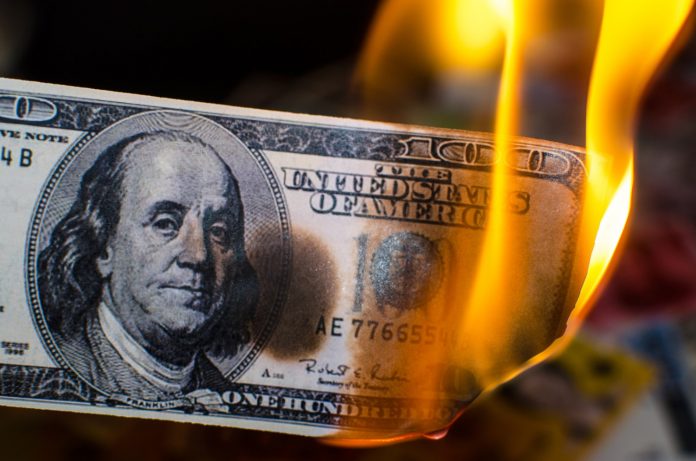After much anticipation and nail-biting from traders, the May Consumer Price Index (CPI) is finally here.
And, as we predicted earlier in the week, inflation came in “hotter” than expected. The question now is whether the data is “too hot” for bulls to handle.
Headline CPI (which includes food and energy prices) rose 0.6% month-over-month (MoM), beating the 0.5% estimate while soaring 5.0% year-over-year (YoY) vs. 4.7% expected.
The last time headline CPI was up this much was August 2008, immediately prior to the Financial Crisis.
But it gets worse:
Core CPI (which excludes food and energy prices) erupted 0.7% MoM, too, easily surpassing the 0.4% estimate. YoY, core CPI has risen a stunning 3.8%, well above the expected 3.4% yearly increase. Core CPI is now rising at a level unseen since 1992.
Goods prices, meanwhile, jumped 6.5% YoY, surging to a 39-year high. Former Fed Chairman Paul Volcker hiked interest rates to 20% the last time goods inflation was this hot.
So, equities are down, right?
You’d certainly think so. But, as usual, bulls are buying the news. The S&P 500 was up 0.70% on the day at one point during this morning’s trading session.
Well at least Treasury yields are rising, aren’t they?
The 10-year Treasury yield did spike (temporarily) at the open in response to the May CPI numbers, but by noon, it ended up collapsing into the red.
Surely, gold prices must be up big, then?
Again, no. Gold’s spot price was actually down on the day before recovering to achieve a minuscule gain.
At every level of every market, it seems nobody is concerned about the worse-than-expected inflation data. There’s perhaps no better example of this than the aforementioned 10-year Treasury yield, which has historically tracked core CPI.
The 10-year yield is currently at 1.48%. At virtually any other period of time over the last four decades, that would imply a YoY core CPI increase of 1.3%-1.5%.
But core CPI is up 3.8% YoY, more than it was in April. Instead of rising, however, Treasury yields have actually fallen over the last month.
The Fed assured investors time and time again that the coming tide of inflation would be transitory – i.e., not permanent. And though nearly every skeptical analyst has insisted the opposite, it seems the Fed’s message was heard loud and clear.
This morning’s Treasury activity suggests that inflation is being received as transitory. The stock market’s response indicates the same. Even precious metals aren’t bouncing like one would expect.
But why?
Billionaire fund manager Stan Druckenmiller put it best this morning in a message to CNBC Squawk Box host Joe Kernen:
“The market is not speaking right now on May’s CPI data and will not until the Fed stops canceling market signals and at that point we will know,” Kernen said, reading Druckenmiller’s note.
With so many forces pushing and pulling on the markets, true price discovery is dead. The Fed won’t let that happen, simply because it won’t comment on the May CPI increase. If Fed Chairman Jerome Powell buries his central bank’s head in the sand, then the inflation data won’t matter in the short term.
That’s not to say investors will remain ignorant to this fact forever, though. They are likely to realize the current path is unsustainable, regardless of the Fed’s response (or complete lack thereof).
So, stocks may press higher today, but that doesn’t mean another leg up is on its way. Exhausted bulls were looking for a reason to push the market to new highs.
They didn’t get anything even close to that with the May CPI data, which should eventually skew bearish as this unsettling trend continues.







